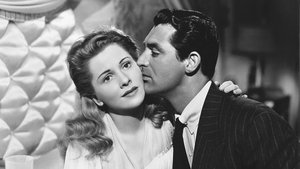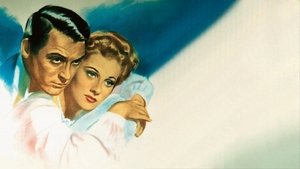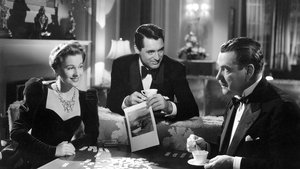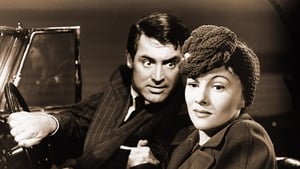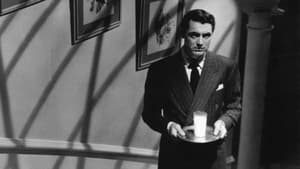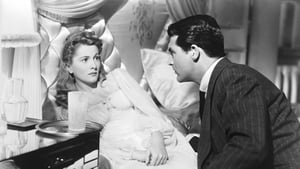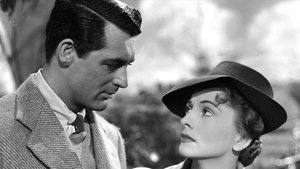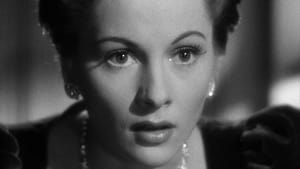Contact: info@alwanfilm.com
Video Sources 0 Views
- Watch trailer
- Suspicion

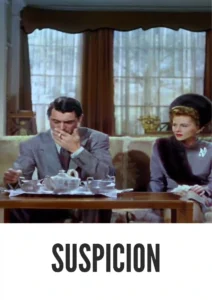
Synopsis
Table of Contents
ToggleReview: Suspicion 1941 Colorized – A Gripping Psychological Thriller

Introduction
Suspicion, released in 1941, is a captivating psychological thriller directed by Alfred Hitchcock. Renowned for its suspenseful plot, masterful direction, and standout performances, this classic film continues to intrigue audiences with its exploration of paranoia, mistrust, and deception. In this review, we’ll delve into the intricate web of intrigue woven by Suspicion and its enduring impact on the thriller genre.
Check The Full Colorized Movies List
Check Our Colorized Movies Trailer Channel
Understanding Suspicion 1941 Colorized: Director, Cast, and Genre
Directed by the legendary Alfred Hitchcock, Suspicion features a stellar cast led by Joan Fontaine and Cary Grant. The film belongs to the psychological thriller genre, known for its exploration of the human mind and its ability to generate tension and suspense through psychological manipulation.
Exploring the World of Suspicion 1941 Colorized: Plot and Characters
Suspicion follows the story of Lina McLaidlaw, a young woman who becomes increasingly suspicious of her charming husband, Johnnie Aysgarth, after uncovering evidence that suggests he may be hiding a dark secret. As Lina’s paranoia grows, she finds herself trapped in a web of deceit and manipulation, unsure of whom she can trust. As the tension mounts, the film hurtles towards a thrilling and unexpected conclusion that leaves viewers on the edge of their seats.
The Art of Film Colorization
While Suspicion was originally filmed in black and white, its early colorized version adds a new layer of depth to its atmospheric visuals. The colorization process enhances the film’s moody atmosphere and captures the nuances of its characters’ emotions with striking clarity.
Early Colored Films: A Brief History
The history of early colored films is marked by innovation and experimentation as filmmakers sought to enhance the visual appeal of their movies. From hand-tinted frames to pioneering technicolor processes, the evolution of colorization techniques transformed the cinematic landscape, offering audiences a new way to experience their favorite films.
Suspicion (1941) and Its Early Colored Version
The decision to release Suspicion in a colorized format was made with the intention of immersing audiences in the film’s atmospheric visuals and enhancing its emotional impact. While some purists may prefer the original black and white version, the early colorized edition of Suspicion adds a new layer of depth to its moody atmosphere and captures the complexity of its characters with breathtaking clarity.
The Debate Over Film Colorization
The debate over film colorization continues to divide audiences and industry professionals alike. While some argue that colorization breathes new life into classic films and makes them more accessible to modern audiences, others maintain that it compromises the artistic integrity of the original work. As technology advances and filmmaking techniques evolve, the debate over colorization remains a topic of ongoing discussion within the film community.
Examining Suspicion (1941) as an Early Colored Film
Viewing Suspicion in its early colorized iteration offers audiences a fresh perspective on its atmospheric visuals and complex characters. The colorization process enhances the film’s moody atmosphere and captures the nuances of its characters’ emotions with stunning clarity. As viewers are drawn into Lina’s world of paranoia and mistrust, they are treated to a visual feast that immerses them in the psychological tension of Hitchcock’s masterful storytelling.
Influence and Legacy: Suspicion 1941 Colorized’s Impact on Cinema
Suspicion is widely regarded as one of Alfred Hitchcock’s finest films, with its suspenseful plot, masterful direction, and standout performances leaving a lasting impact on the thriller genre. Its exploration of paranoia, mistrust, and deception continues to inspire filmmakers and thrill audiences to this day, cementing its status as a timeless classic of cinema.
Director’s Cinematic Legacy: Beyond Suspicion 1941 Colorized
Alfred Hitchcock’s directorial legacy extends far beyond Suspicion, encompassing a diverse body of work that includes some of the most iconic films in cinematic history. From Psycho to Vertigo, Hitchcock was known for his ability to thrill and terrify audiences with his unique blend of suspense, intrigue, and psychological insight. Suspicion stands as a testament to his talent and creativity, solidifying his reputation as one of the greatest filmmakers of all time.
Themes Explored in Suspicion 1941 Colorized
At its core, Suspicion explores themes of paranoia, mistrust, and deception in the context of a troubled marriage. Through its suspenseful plot and complex characters, the film offers a nuanced portrayal of the human psyche, challenging viewers to question their own perceptions of reality as they navigate the twists and turns of Hitchcock’s labyrinthine narrative.
Reception and Controversy Surrounding Suspicion 1941 Colorized
Upon its release, Suspicion received widespread critical acclaim for its suspenseful plot, masterful direction, and standout performances. While the decision to release the film in a colorized format sparked debate among purists, its enduring popularity has cemented its status as a timeless classic of the thriller genre.
Where to Watch Suspicion 1941 Colorized Online
For those eager to experience Suspicion for themselves, the film is readily available on popular streaming platforms such as Amazon Prime Video, Google Play Movies, and iTunes. Whether viewed in its original black and white format or its early colorized iteration, Suspicion offers a cinematic experience that is both suspenseful and visually stunning.
FAQs About Suspicion 1941 Colorized
1. Is Suspicion based on a true story?
No, Suspicion is a fictional film that explores the themes of paranoia, mistrust, and deception in the context of a troubled marriage. While the film’s storyline may draw inspiration from real-life events, its characters and plot are works of fiction.
2. Who starred in Suspicion?
Suspicion stars Joan Fontaine in the role of Lina McLaidlaw, a young woman who becomes increasingly suspicious of her charming husband, Johnnie Aysgarth, played by Cary Grant. The film also features supporting performances from Nigel Bruce, Cedric Hardwicke, and Dame May Whitty.
3. What is the central message of Suspicion?
At its core, Suspicion explores the themes of paranoia, mistrust, and deception in the context of a troubled marriage. Through its suspenseful plot and complex characters, the film offers a nuanced portrayal of the human psyche, challenging viewers to question their own perceptions of reality as they navigate the twists and turns of Hitchcock’s labyrinthine narrative.
4. Why was Suspicion released in a colorized format?
The decision to release Suspicion in a colorized format was made with the intention of immersing audiences in the film’s atmospheric visuals and enhancing its emotional impact. While some purists may prefer the original black and white version, the early colorized edition of Suspicion adds a new layer of depth to its moody atmosphere and captures the complexity of its characters with breathtaking clarity.
5. What is the legacy of Suspicion?
Suspicion is widely regarded as one of Alfred Hitchcock’s finest films, with its suspenseful plot, masterful direction, and standout performances leaving a lasting impact on the thriller genre. Its exploration of paranoia, mistrust, and deception continues to inspire filmmakers and thrill audiences to this day, cementing its status as a timeless classic of cinema.
6. Are there any sequels or remakes of Suspicion?
No, there have been no official sequels or remakes of Suspicion. However, the film’s enduring popularity has inspired countless reinterpretations and homages in various media. Nonetheless, none have captured the suspenseful atmosphere and psychological depth of the original 1941 classic.
7. Where can I watch Suspicion online?
For those eager to experience Suspicion for themselves, the film is readily available on popular streaming platforms such as Amazon Prime Video, Google Play Movies, and iTunes. Whether viewed in its original black and white format or its early colorized iteration, Suspicion offers a cinematic experience that is both suspenseful and visually stunning.
Conclusion
In conclusion, Suspicion (1941) stands as a gripping psychological thriller that continues to captivate audiences with its suspenseful plot, masterful direction, and standout performances. Whether viewed in its original black and white format or its early colorized iteration, Alfred Hitchcock’s insightful exploration of paranoia, mistrust, and deception offers a timeless reminder of the power of the human psyche and the dangers of succumbing to one’s darkest fears. Suspicion remains a classic of the thriller genre that continues to thrill and intrigue audiences around the world.
